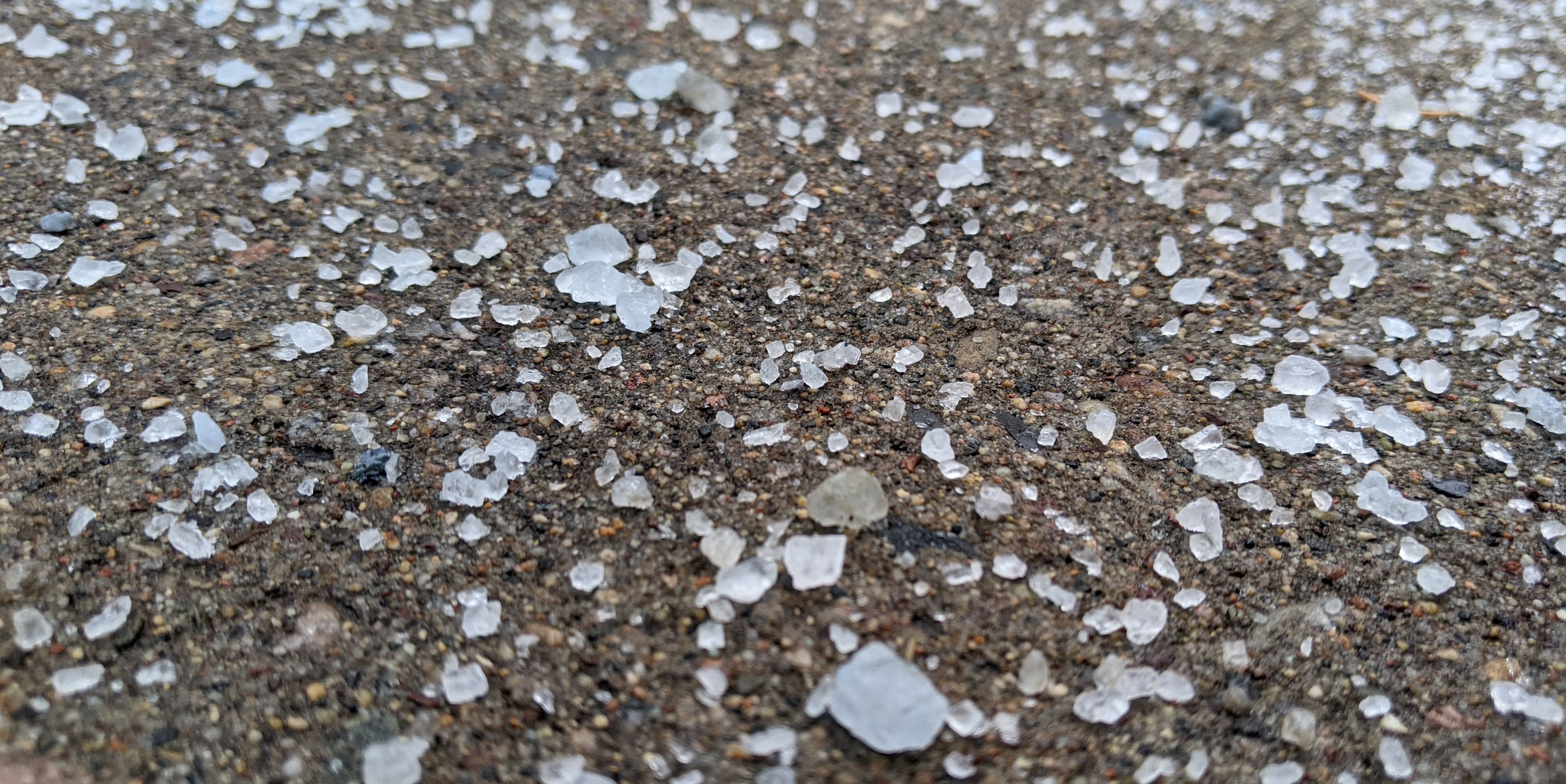Welcome to the latest issue of the Home Lawn Care Newsletter from UMN Turfgrass Science! We will provide up-to-date information to address all your lawn care tasks at the times when you need to know. Watch for our next issue in March 2023!
Jan 18, 2023: Issue 8
Lawn Myths – Do liquid lawn dethatchers work?
Thatch is mostly decomposing grass roots and stems. It's found just under the soil and looks like a thick, brown organic layer if you dig a slice out of your lawn. Thatch that's less than 1/2 inch thick is healthy, allowing air, nutrients and water to reach the roots. It can also help retain moisture and keep lawn temperatures lower. When it's more than 1/2 inch thick (about the size of a dime), it's just the opposite, and the thatch is limiting air, nutrients and water. Kentucky bluegrass and creeping fine fescues tend to naturally create more thatch than bunch grasses such as other fine fescues and tall fescue.
Many residents are searching for biological treatments for their lawns and wonder how liquid lawn dethatching products work. For the most part, the products are bacteria or enzymes in a solution, or are a food source like molasses for existing microorganisms, and are applied multiple times a season to the lawn. There is minimal, inconclusive scientific research of these products. The soil in your lawn may already have these bacteria and enzymes. When residents have good lawn care practices, such as proper fertilizing, watering, mowing, and maintaining soil pH levels, you're doing the right things to help prevent too much thatch from forming. When you need to dethatch, using a vertical mower is a good solution for dethatching unstressed turf in the later summer or early fall in Minnesota.
- How to control thatch in your lawn from UMN Extension
Deicing and your lawn
It's been a year for needing deicing products for your sidewalks - and deicing is only one of the many ways winter takes a toll on your lawn. We hope you did your fall lawn maintenance and kept your lawn watered. Fall lawn practices are the most beneficial to your lawn and help it get through winter.
When it comes to deicing, salt in the form of sodium chloride is being studied more closely as we learn the impact it has on groundwater. Recent studies at UMN and other universities have shown the impacts of different deicing products, some of which may be better options for you. Remember to always shovel snow off before adding any type of chemical deicer to your sidewalk.
The type of grass in your lawn also plays a role in how much damage you may see in the spring from deicers. Generally, Kentucky bluegrass suffers more damage, while fine fescues, especially creeping varieties, show more tolerance. Read the articles below to find out more about your deicing options, and their impact on the environment.
- Minimizing turf damage from salt this winter by Josh Friell, UMN
- Watershed-friendly deicing from PennState Extension
- Winter parking lot and sidewalk maintenance from Minnesota Pollution Control Agency
- How salt works and overview of deicing chemicals from Minnesota Pollution Control Agency
- Salt-tolerant roadside grasses: Does anything actually survive? by Matt Cavanaugh, UMN
- Melting ice on putting greens by Kevin Frank, Andrew Hollman, Brian Horgan and Sam Bauer, UMN
Research Highlights
The UMN Turfgrass Science team is constantly working on limiting winter stress for turfgrass growers in colder climates. Some of this work, as part of the WinterTurf project, includes research to better understand local conditions affecting winter injury or death of the turf. This multi-year study will help turfgrass managers better predict conditions where winter injury can be expected. This will ultimately help reduce winter damage for turfgrass professionals like golf course superintendents, and eventually for residents in cold climate regions like Minnesota as well. Read more about our winter-related turfgrass research:
- It may be July, but winter injury research is still in full swing by Michelle DaCosta, University of Massachusetts
- Identifying traits enabling turfgrass crown resistance to freezing damage by Maicy Vossen, UMN
- WinterTurf project website
